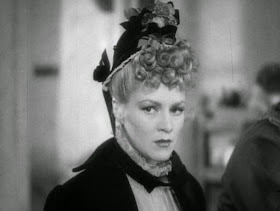The week long dance residency for the Bigfork School in January by The Zenon Dance Company was very successful. The residency culminated in a performance for students and family. Zenon is returning for a public performance in April. Zenon is “…One of the nation’s premier repertory dance companies. Zenon Dance Company captivates audiences with a rare and dynamic blend of modern and jazz.” This second visit will include some of the students from the January program introducing the show. It promises to be a wonderful evening of entertainment. Friday, April 10th at 7PM. Admission: $10 for adults and $5 for children.
Zenon Dance Company's Artistic Director Linda Andrews says Zenon is returning to The Edge, “…early enough this year so that the January student residency is still relevant to the students. The residency was a wonderful experience for Zenon. We loved the community and the venue. With our April 10th performance, we will get a chance to see ‘old friends’ again while sharing our expertise and love for American modern dance. The performance will be energetic and passionate with something for everyone.”
Following the student introduction, this public performance will include a premiere performance of a work by Minnesota choreographers Wynn Fricke (based on selected Bulgarian folk songs) and a performance of internationally known Afro-Cuban choreographer Osnel Delgado titled “Coming Home”. It is about a journey in which the sport of baseball becomes common ground between the choreographer, dancers and the audience. Above photo from "Coming Home" by Steve Neidorf.
Zenon Dance is known for its dynamic blend of modern and jazz dance, and they work with emerging as well as internationally renowned choreographers. Awards Zenon has received includes: the 2010 Minnesota SAGE Award for Dance, the McKnight Excellence in the Arts Award and the Twin Cities Mayors' Public Arts Award. Below photo by V. Paul Virtucio.
From the Zenon site: Osnel Delgado’s work "Coming Home" is his first dance piece for a U.S. company. The Cuban choreographer is this year’s Northrop McNight International Artist...Delgado describes "Coming Home" as "a piece about a journey in which the sport of baseball (beloved by Cubans and Americans) became common ground between the choreographer and dancers and is also a metaphor for life, confrontation and people coming together for a common goal." Fleeting gestures and abstract movements from baseball are embedded in a dynamic, contemporary dance work.” http://www.zenondance.org/
About Wynn Fricke: “Wynn Fricke has been called a ‘choreographic shaman’ who creates ‘timeless works that comment on the human condition with muscular choreography and primordial power" (Star Tribune). Her choreography has been produced nationally, in Russia, and Micronesia, and includes commissions from Zenon Dance Company, Ragamala Dance, James Sewell Ballet…Wynn is the recipient of seven McKnight Fellowships in Choreography and Performance, and two New York State-funded grants from Arts International and Trust for Mutual Understanding….Wynn serves on the faculty at Macalester College in Saint Paul, MN.”http://www.wynnfricke.com
The new piece titled "The Mourning Tree" is danced to traditional Bulgarian folk songs and sung by the Mila Vocal Ensemble (pictured above), an a cappella women’s choir based in St. Paul. The Bigfork performance will use a recording of these songs. "The Mourning Tree" startles with arresting rhythms and harmonies, that tell age-old stories of love and sorrow. The choreography captures their themes in a powerfully ritualistic and contemporary expression.
Photo by William Cameron
Come and enjoy this special blend of modern and jazz dance with an evening of internationally known professional dancers and some local Bigfok students. Friday, April 10th at 7PM. Admission: $10 for adults and $5 for children.
Photo by Steve Niedorf

















_02.jpg)



















